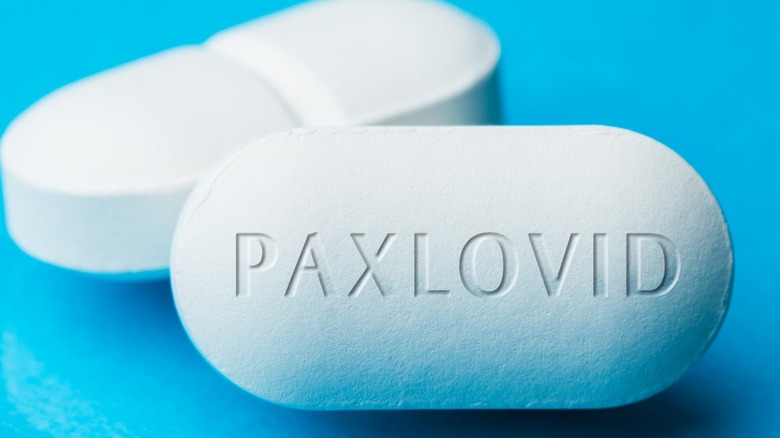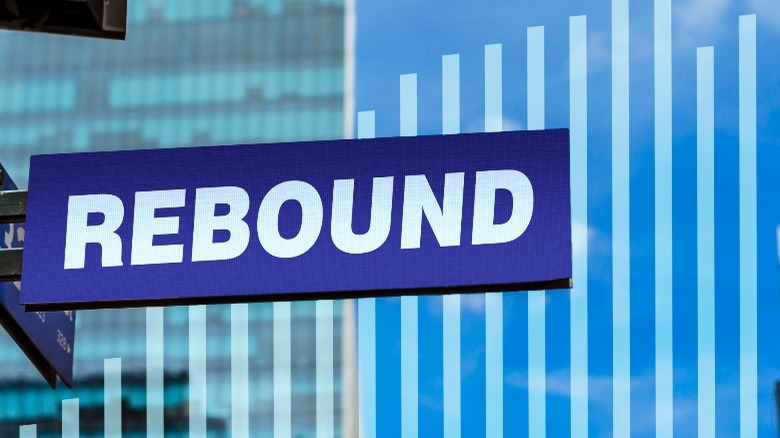How Common Paxlovid COVID-19 'Rebound' Cases Really Are
In December 2021, the U.S. Food and Drug Administration granted an emergency use authorization for the oral antiviral pill treatment under the brand name Paxlovid. The series of pills are intended to treat mild-to-moderate COVID-19 for those ages 12 and up (weighing at least 88 pounds), who test positive and are at risk for "progression to severe COVID-19, including hospitalization or death." Risk factors include — but are not limited to — those ages 65 and older, racial and ethnic minority groups, or those with an underlying medical condition like asthma, cancer, or diabetes (per Centers for Disease Control and Prevention).
Yale Medicine recommends that the treatment begin within five days of the start of symptoms. According to Scientific American, Paxlovid, a Pfizer drug, consists of three pills that are taken every day for five days in a row. One pill — nirmatrelvir — is taken twice per day and helps to suppress viral replication. The other pill — ritonavir — helps keep nirmatrelvir active in the body for a longer period of time. Some people — like President Joe Biden — tested positive again a few days after completing the treatment with a negative test (per The Atlantic). Here's what you need to know about what experts call paxlovid COVID-19 rebound.
Paxlovid COVID-19 rebound is not very common
According to a 2022 study published in the New England Journal of Medicine, Paxlovid treatment reduced the risk of hospitalization or death by 89% compared to a placebo. There have been reported cases where people initially tested negative after treatment, then tested positive for the virus again a few days later (per U.S. Food and Drug Administration). According to the Centers for Disease Control and Prevention, COVID-19 rebound can occur anywhere from two to eight days after completing the five-day Paxlovid treatment — even if you are vaccinated. While the rebound can include a recurrence of the illness and/or a positive test, they typically get better or settle down in three days, on average.
The frequency of COVID-19 rebound with Paxlovid treatment is debated, with some estimates claiming it is lower than 1%, while other estimates place it at greater than 10% (per CNN). Notably, rebound cases are not unique to the Paxlovid treatment. Clinical trial data from Pfizer found that rebound cases occurred in both the placebo and Paxlovid treatment groups around 2-7% of the time (via Research Square). While rebound symptoms with Paxlovid treatment tend to be mild, there is a possibility of transmission. That's why the Centers for Disease Control and Prevention recommends that those with rebound COVID-19 restart isolation for at least five days and wear a mask for 10 days. Re-isolation can end if the infected person has improved symptoms and is fever free for 24 hours without the use of medication.


